The oldest inland town in Western Australia is York, located 97 kilometres (60 miles) east of Perth, on the Avon River. Northam and
Toodyay lie to the north.
The area has a temperate climate, with hot, dry summers and cool,
wet winters.
Ballardong Noongar People
The fertile Avon Valley town of York is part of the traditional lands of the Ballardong Noongar people who have lived in the area for thousands of years.
Very strong spiritual beliefs governed Aboriginal society, where mythical creatures and Dreamtime stories were often related to
geographical features of the landscape.
Strict rules applied to visitors wishing to visit or access Ballardong land. However, Aboriginal people of the York district believed that the people living far away to the east of their land, were cannibals, and this belief made the York people very fearful of strangers, especially, from the east
(1)
Budjar means "Country" the homeland or place where Noongar people belong.
 |
| Aboriginal Rock Paintings in the Moon Cave just outside York, WA |
British Settlement
The official British settlement of Western Australia commenced at King George Sound in Albany in 1826, with a military contingent. Free settlers came later. This British colony was initially named the Swan River Colony and later renamed Perth, in 1829 ( 41 years after the First Fleet arrived at Botany Bay).
1830s
York, the first inland town settled in Western Australia, was named York, as two members of Robert Dale's exploration party (the Hardey brothers), who hailed from Yorkshire, thought that the Avon Valley resembled their home. The district was opened for selection on 11 November 1830.
The first settlers were escorted to the Avon Valley by Robert Dale, who had described the area as "undulating
country which had a most gratifying appearance". The group arrived on 15 September 1831, after ten days of travel from Guilford.
In 1831, Rivett Bland was appointed by the Governor James Stirling to settle the York district, and to establish a stockyard there. Bland went into partnership with Arthur Trimmer, who with his brothers had brought Merino sheep to the colony.
Bland also received a grant south of the town. He called this land Balladong Farm, from as early as 1831.
The group immediately
began constructing huts and preparing the land for raising stock and growing crops. Dale also proposed an area two miles south of the summit of Mt Bakewell for the future York townsite.
John Henry Monger Snr was born in Faversham, Kent, England, in 1800. He arrived in Western Australia with his wife Mary, on the ship
Lotus in 1829, as part of Colonel Lautour's emigration scheme to the Swan River. He moved to York in 1837 and built the town's first hotel.
The York Hotel, built of wattle and daub on Avon Terrace, was built on land that Monger purchased from Rivett Henry Bland and Arthur Trimmer for £100 in April 1838. In 1841, he established a general store opposite the Imperial Hotel. In 1861, Monger donated land for a town hall at York, and he paid for York's first bridge. His home, Faversham House, commenced construction in the late 1830s.
 |
| John Henry Monger Snr |
By the end of 1932, the York district had sheep runs operating, and fields of grain and vegetables growing. However, in the next few years, the crop yield was not so successful; the kangaroos competed with the sheep for grass and the Aboriginal people clashed with the settlers
over the land.
Finding farmworkers was difficult and the costs of transport from Perth to York for supplies cost more than bringing goods from London to Fremantle, for the first decade of settlement.
1840s
 |
Avon Gazette and York Times (WA : 1916 - 1930)
|
A doctor who visited York in 1941, wrote later that
"....the township of York boasts of but few buildings, and these of a temporary construction. A great proportion of the town allotments belong to Mr Bland, the Government Resident, who has thrown them into one good field, so that the projected streets and squares exist only in fantasy and it would be difficult to discover any resemblance to a city here, as on the site of ancient Troy."
 |
| Perth Gazette and Western Australian Journal (WA : 1833 - 1847), Saturday 11 November 1843 |
Convicts and Crime
In 1845 the York Agricultural Society petitioned the Legislative Council to provide them with convicts. In 1850, the first convicts arrived from the ship
Pyrenees, which had
arrived in the Colony a few weeks before, along with more free settlers.
In August 1851 Sergeant James Hayden led a detachment of enrolled pensioners to York. Not long afterwards, the York Convict Depot
would be built.
A report from this period:
"At York a substantial stone gaol, with twelve separate cells, is in course of erection. It is a heavy piece of work for so small a number of men as have been available for it, but is progressing well. A large number of bricks have been burnt by the men for future building. Buildings thus constructed are much more durable than those built country fashion, of mud, as was originally intended, and the bricks cost about one third the usual market price. Stone foundations have been laid for the proposed buildings, and the necessary preparations made for their completion during the ensuing summer. Repairs have also been executed on the roads in the vicinity."
Commerce in the region was coming along well, as the export of wool, sandalwood and horses from the region were sent to Bombay and Madras, for the Indian Cavalry. Local wheat was being milled in the town and new buildings and bridges built.
 |
| York, WA, in 1857, from "The Illustrated London News" of February 28, 1857. Western Mail (Perth, WA : 1885 - 1954) |
1850s
Solomon Cook was an American engineer who constructed a mill at York and one of Western Australia’s first steam engines in 1852.
1870s
The telegraph line from Perth to York via Guilford, Newcastle and Northam opened between December 1871 and January 1872.
1880s
The York rail station opened on 29 June 1885.
In 1889, the town was stimulated by the discovery of gold at Southern Cross and later, at Coolgardie. Stores popped up to supply the goldfields and blacksmith and harnessmakers were required by the thousands of hopeful miners who passed through York on their way to the goldfields.
More info
1890s
 |
| Daily News (Perth, WA : 1882 - 1950), Thursday 22 April 1897 |
1900s
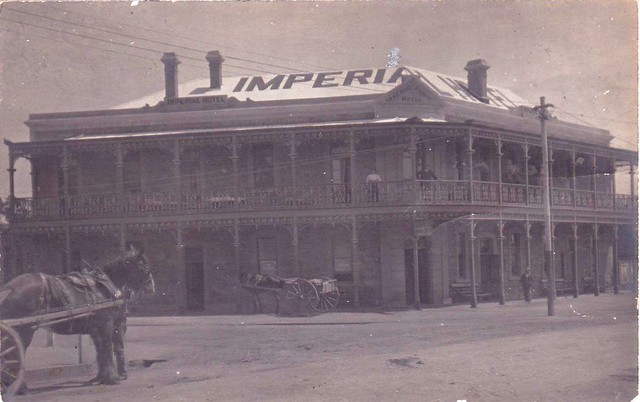 |
| Imperial Hotel, York, Western Australia - very early 1900s Kaye |
When the Wheatbelt opened up in the 1890s, the growth of York began to slow, which has allowed the preservation of many of the town's
wonderful historic buildings, which can still be appreciated and enjoyed today.
 |
York from Mount Brown, W.A., circa .1900, State Library of Western Australia
|
 |
| Seabourne Farm, York WA, establsihed in 1832, Western Mail (Perth, WA : 1885 - 1954), Saturday 10 June 1905 |
 |
| Harvesting, York, Western Australia, 1908, Special Collections |
 |
| Imperial Hotel, corner of Avon Terrace and Joaquina Street, York, in the early 1900s. Hotel built 1886. Aussie~mobs |
 |
| Avon Terrace, York, W.A. - early 1900s, Aussie~mobs |
 |
| Avon Terrace, York, WA, looking west, Western Mail (Perth, WA : 1885 - 1954), Saturday 4 June 1910 |
 |
| The National Bank, York, WA, Western Mail (Perth, WA : 1885 - 1954), Saturday 1 January 1910 |
 |
| THE PREMISES OF MESSRS. THORN AND BROWNLIE. MACHINERY AGENTS, YORK< WA. Western Mail (Perth, WA : 1885 - 1954), Saturday 1 January 1910 |
 |
| York Flour Mill, WA, Western Mail (Perth, WA : 1885 - 1954), Saturday 1 January 1910 |
 |
| MR. B. MOSCHETTIS RAILWAY HOTEL, YORK, WA, Western Mail (Perth, WA : 1885 - 1954), Saturday 1 January 1910 |
 |
| Farrell's News Agency, York, WA, Western Mail (Perth, WA : 1885 - 1954), Saturday 1 January 1910 |
 |
| York Town Hall, WA, Western Mail (Perth, WA : 1885 - 1954), Friday 4 October 1912 |
 |
| York Show, WA, Western Mail (Perth, WA : 1885 - 1954), Friday 11 October 1912 |
 |
| Railway station, York, Wa, Western Mail (Perth, WA : 1885 - 1954), Friday 20 June 1913 |
WWI
 |
| Sergeant Era Wood, wounded at the Dardanelles, 12th Battalion, formerly of York, WA, Daily News (Perth, WA : 1882 - 1955), Tuesday 7 December 1915 |
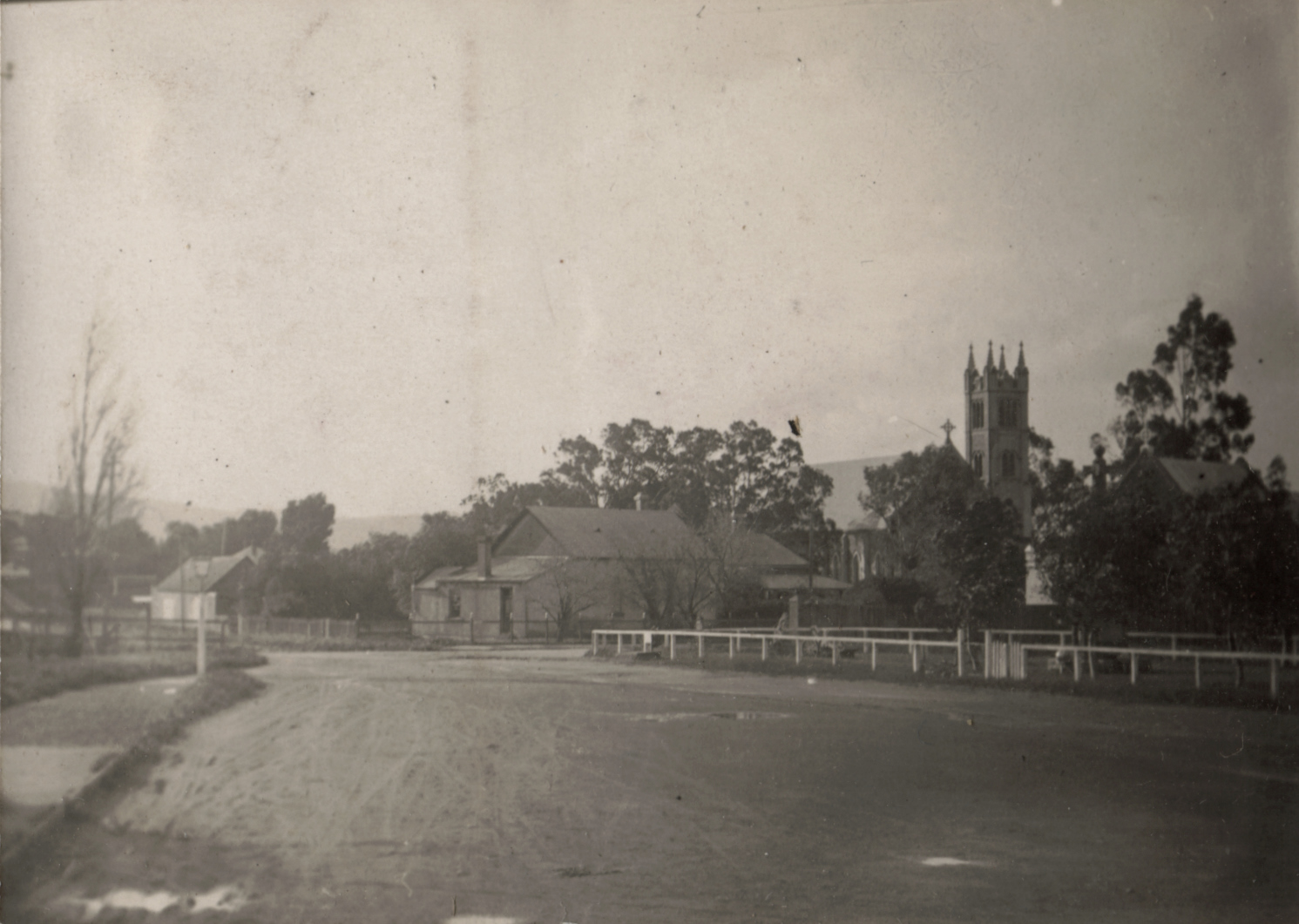 |
| Photograph of York, Western Australia taken by W. E Fretwell in 1925 |
 |
| Chung Ah Sue in his market garden, York , WA, 1925, 005359D, State Library of Western Australia, State Library of WA |
 |
| Was a home at York, WA in 1833, Sunday Times (Perth, WA : 1902 - 1954), Sunday 24 October 1926 |
 |
| Aerial perspective of York, East WA. 5 August 1929 (University of Melbourne) out of copyright |
1930s
 |
| York Colt's Cricket Team, WA. Western Mail (Perth, WA : 1885 - 1954), Thursday 6 March 1930 |
 |
| York Centenary Celebrations, WA, Western Mail (Perth, WA : 1885 - 1954), Thursday 24 September 1931 |
 |
| Avon Terrace, York, WA, Western Mail (Perth, WA : 1885 - 1954), Thursday 5 January 1933 |
 |
| The suspension bridge over the Avon River, York, WA. Western Mail (Perth, WA : 1885 - 1954), Thursday 21 June 1934 |
 |
| Main Street, York, WA, Western Mail (Perth, WA : 1885 - 1954), Thursday 22 April 1937 |
 |
| Pickling and grading wheat on a York farm, WA, Western Mail (Perth, WA : 1885 - 1954), Thursday 22 April 1937 |
 |
| Western Mail (Perth, WA : 1885 - 1954), Thursday 16 June 1938 |
 |
| Western Mail (Perth, WA : 1885 - 1954), Thursday 16 June 1938 |
 |
F. Punch (right), the Aboriginal athlete, who won the York Sheffield Handicap and the 440 yards handicap at the annual sports meeting of the York Athletic Club on Monday. On
the left is his trainer. West Australian (Perth, WA : 1879 - 1954), Wednesday 8 June 1938 |
 |
| York's Main Street, WA, Sunday Times (Perth, WA : 1902 - 1954), Sunday 28 May 1939 |
1940s and WWII
 |
| Sunday Times (Perth, WA : 1902 - 1954), Sunday 11 February 1940, |
 |
| The Red Cross Faversham Convalescent Home ot York, WA, the gift of Mr. and Mrs. A. J. Monger, was opened by the Lieutenant-Governor (Sir James Mitchell), on October 29, in the presence of o large crowd. Western Mail (Perth, WA : 1885 - 1954), Thursday 6 November 1941 |
 |
| Inmates and staff of the Red Cross Faversham Convalescent Home ot York, WA,Western Mail (Perth, WA : 1885 - 1954), Thursday 6 November 1941 |
 |
| The new reservoir at York, which has just been completed. It has a capacity of 500,000 gallons, and will be used as a reserve supply to the old reservoir, which has a capacity of 250,000 gallons. Both York and Beverley draw water supplies from this reservoir. Western Mail (Perth, WA : 1885 - 1954), Thursday 13 June 1940 |
 |
| The inter-town fire brigades. The York Team, Western Mail (Perth, WA : 1885 - 1954), Thursday 30 January 1941 |
 |
| YORK RED CROSS EMERGENCY SERVICE COMPANY, WA, York Chronicle (WA : 1927 - 1954), Friday 5 February 1943 |
 |
| York Races, WA, Western Mail (Perth, WA : 1885 - 1954), Thursday 23 May 1946 |
 |
| York's 100th Show, Western Mail (Perth, WA : 1885 - 1954), Thursday 10 October 1946 |
 |
| York agricultural committee, WA, Western Mail (Perth, WA : 1885 - 1954), Thursday 9 October 1947 |
 |
| Listening Post (Perth, WA : 1891 - 1954), Friday 1 August 1947 |
 |
| Members of the Ladies Auxiliary of York, WA, Western Mail (Perth, WA : 1885 - 1954), Thursday 22 July 1948 |
 |
| York Chronicle (WA : 1927 - 1954), Thursday 27 January 1949 |
1950s
 |
YORK AMBULANCE HEADQUARTERS, WAThe above building was recently opened by His Excellency the Governor. The lecture hall will be used for the first time for first-aid instruction classes commencing this Sunday, March 1, at 10.30 a.m.York Chronicle (WA : 1927 - 1954), Thursday 26 February 1953 |
 |
| West Australian (Perth, WA : 1879 - 1954), Tuesday 18 May 1954 |
Around York
 |
| York's historic Town Hall was built in 1911 and the Imperial Hotel, circa 1886 |
 |
| Faversham House was established in 1840 and built from 1850 by John Monger |
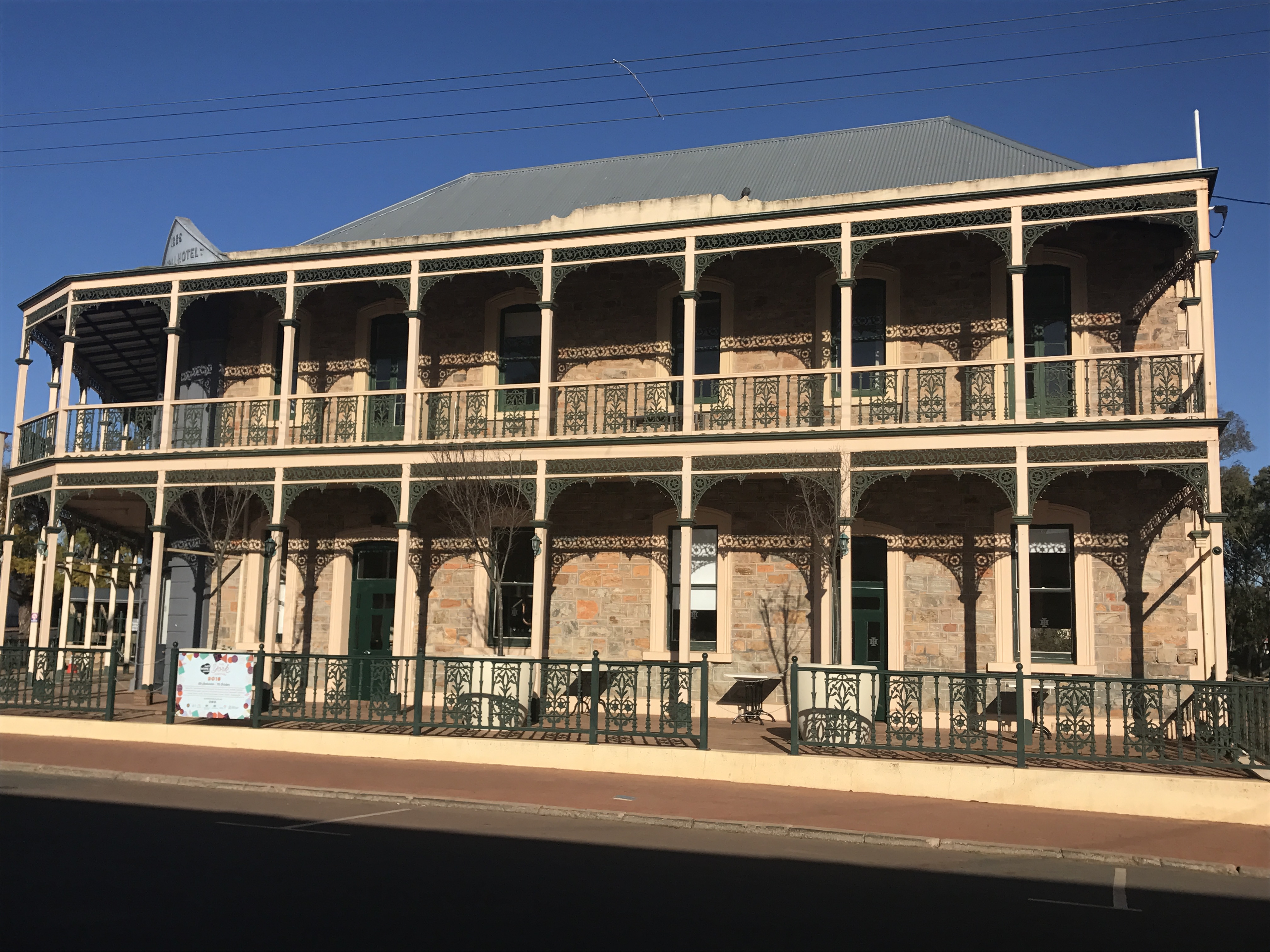 |
| The construction of the Imperial Hotel in York began in November 1885 |
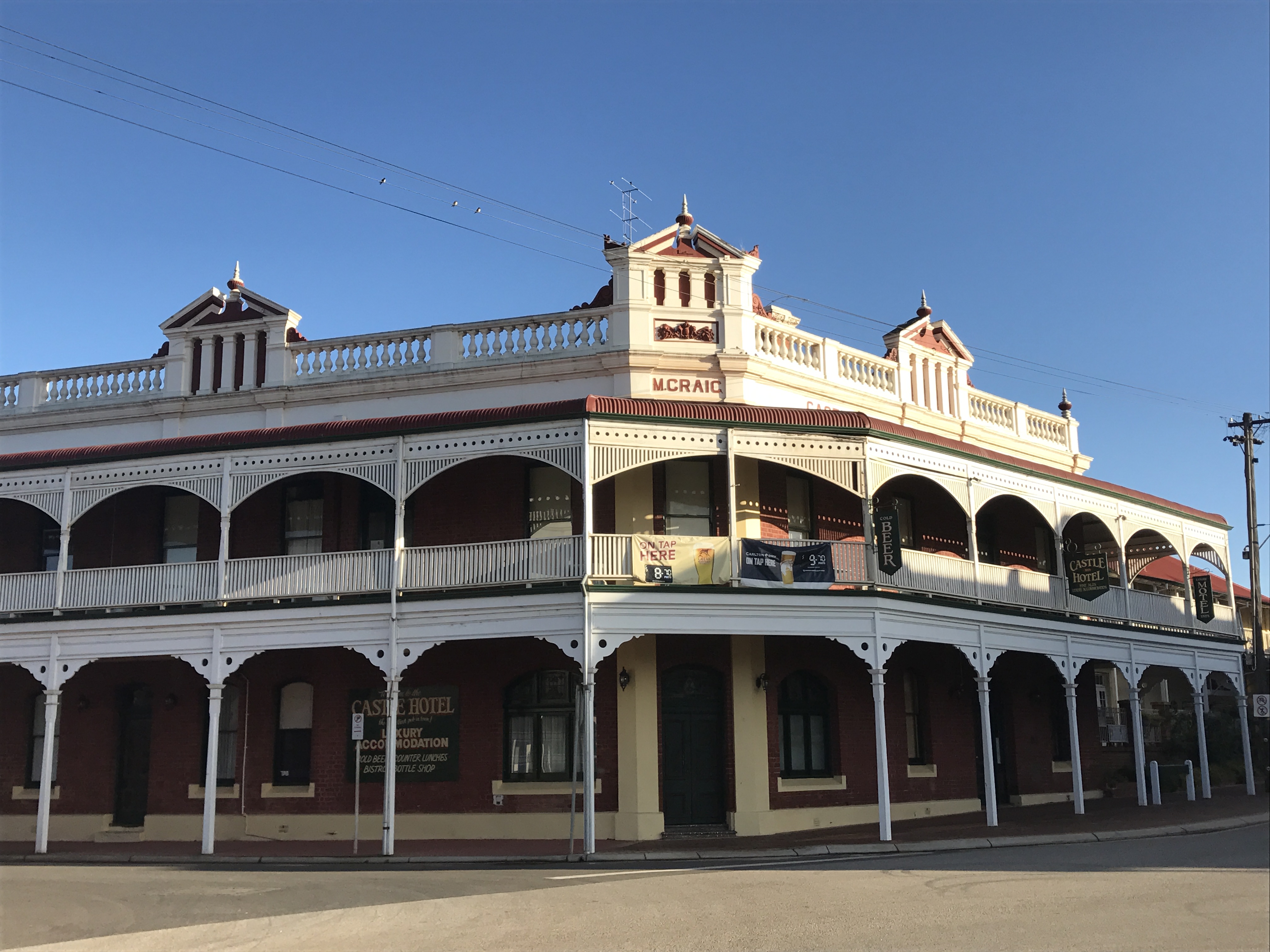 |
| The Castle Hotel in York was constructed in three stages, from 1852, Reputedly the oldest hotel in WA. |
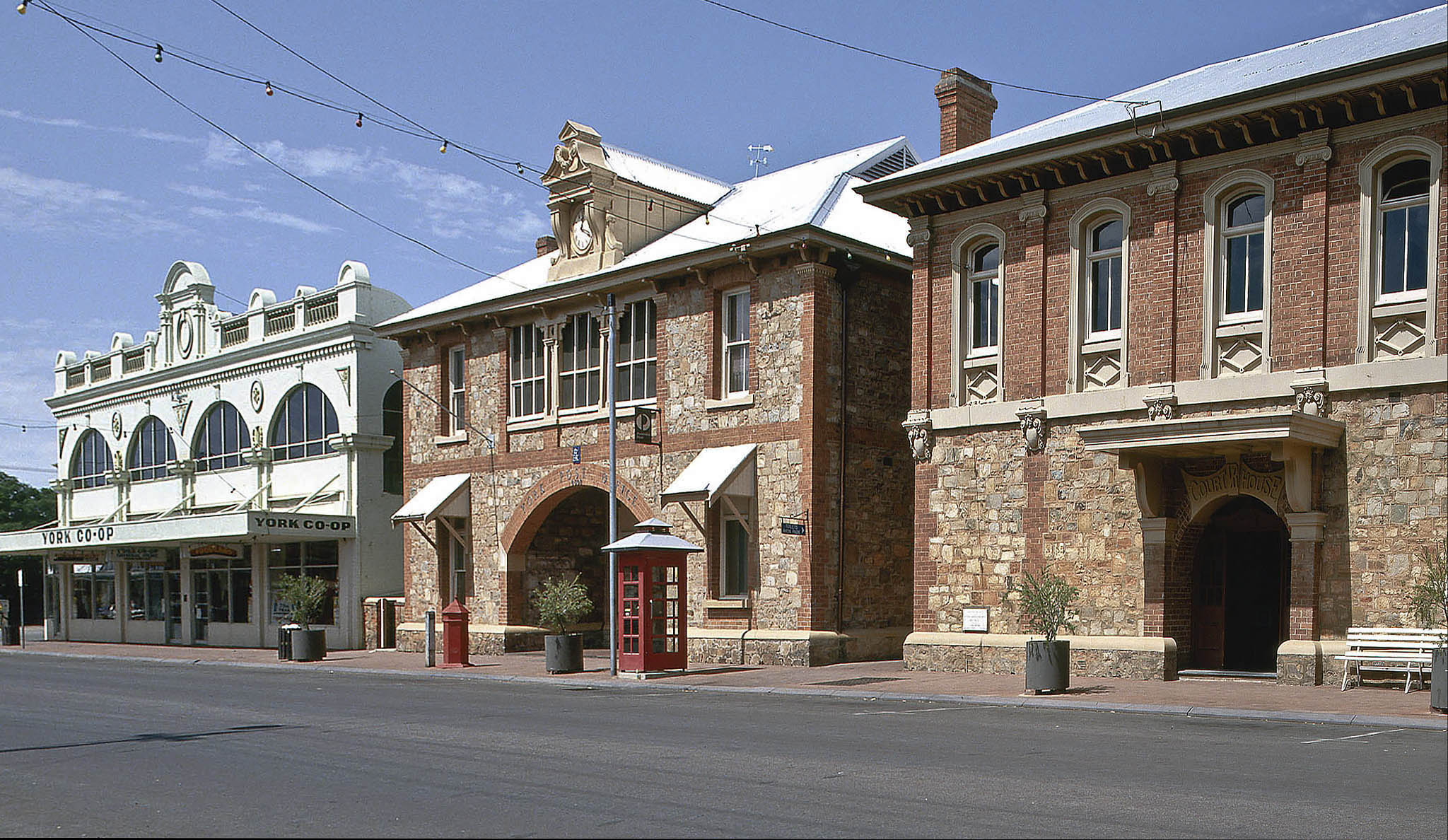 |
| From left 1. York & Districts Co-Op & Quarters was constructed in 1872 for William Edwards Jnr 2. York Post Office, built 1893 3. York Court House, built 1895 |
 |
| The Western Australian Bank building opened 1889 |
 |
| A pharmacy building in York Western Australia, constructed in 1904 |
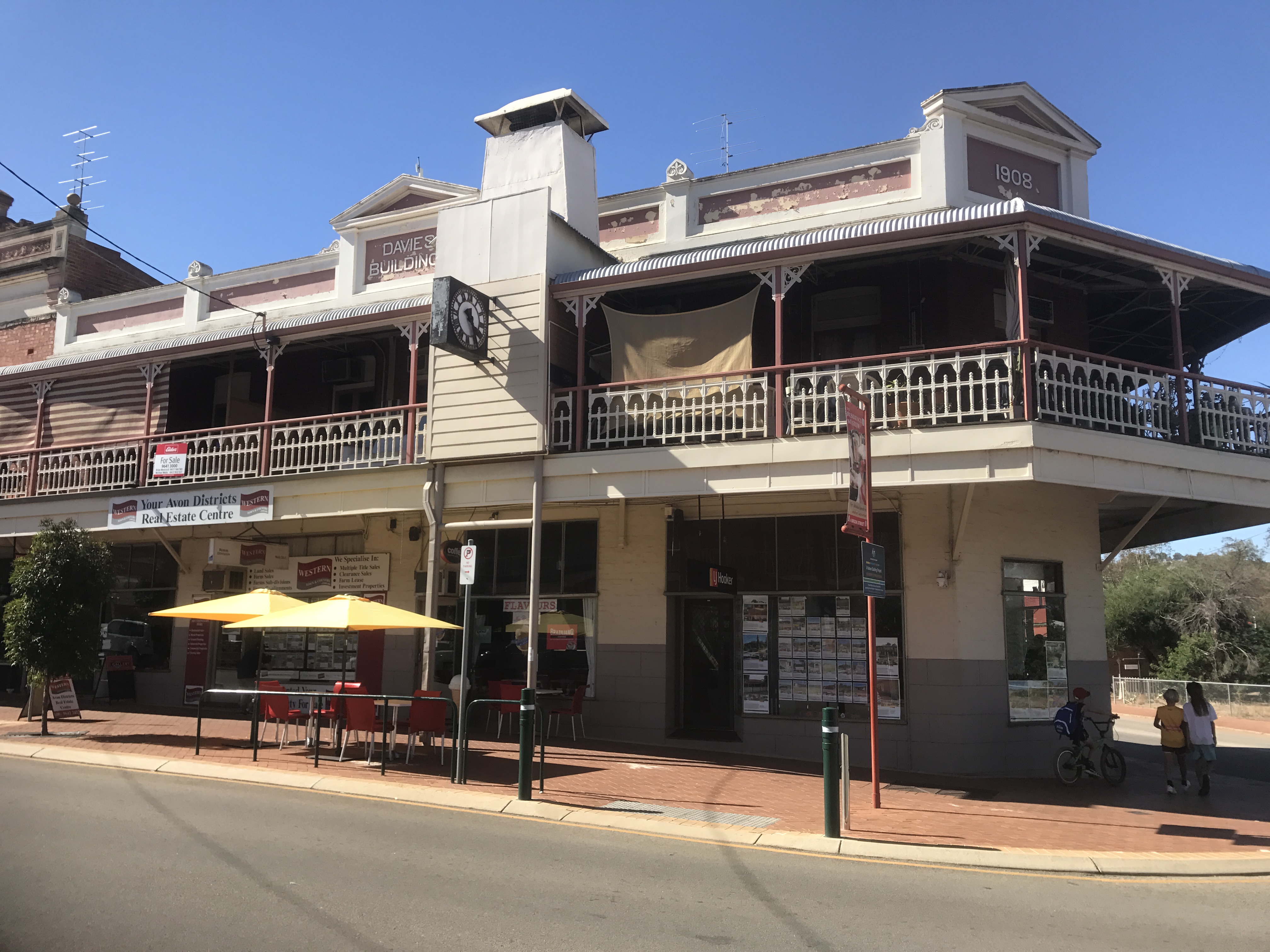 |
| This two storey building built in 1908, replaced the Fruit Palace, built in 1903, by the Davies family |
 |
| York Motor Museum, circa 1887 |
 |
| The York Hospital designed by architect George Temple-Poole was built 1894-95 |
 |
| The York Flour Mill flour mill wa constructed in 1892 |
 |
| Eliza's Cottage was built in several stages from 1840 |
 |
| Dinsdale's Shoe Emporium, Constructed 1887 by William Dinsdale |
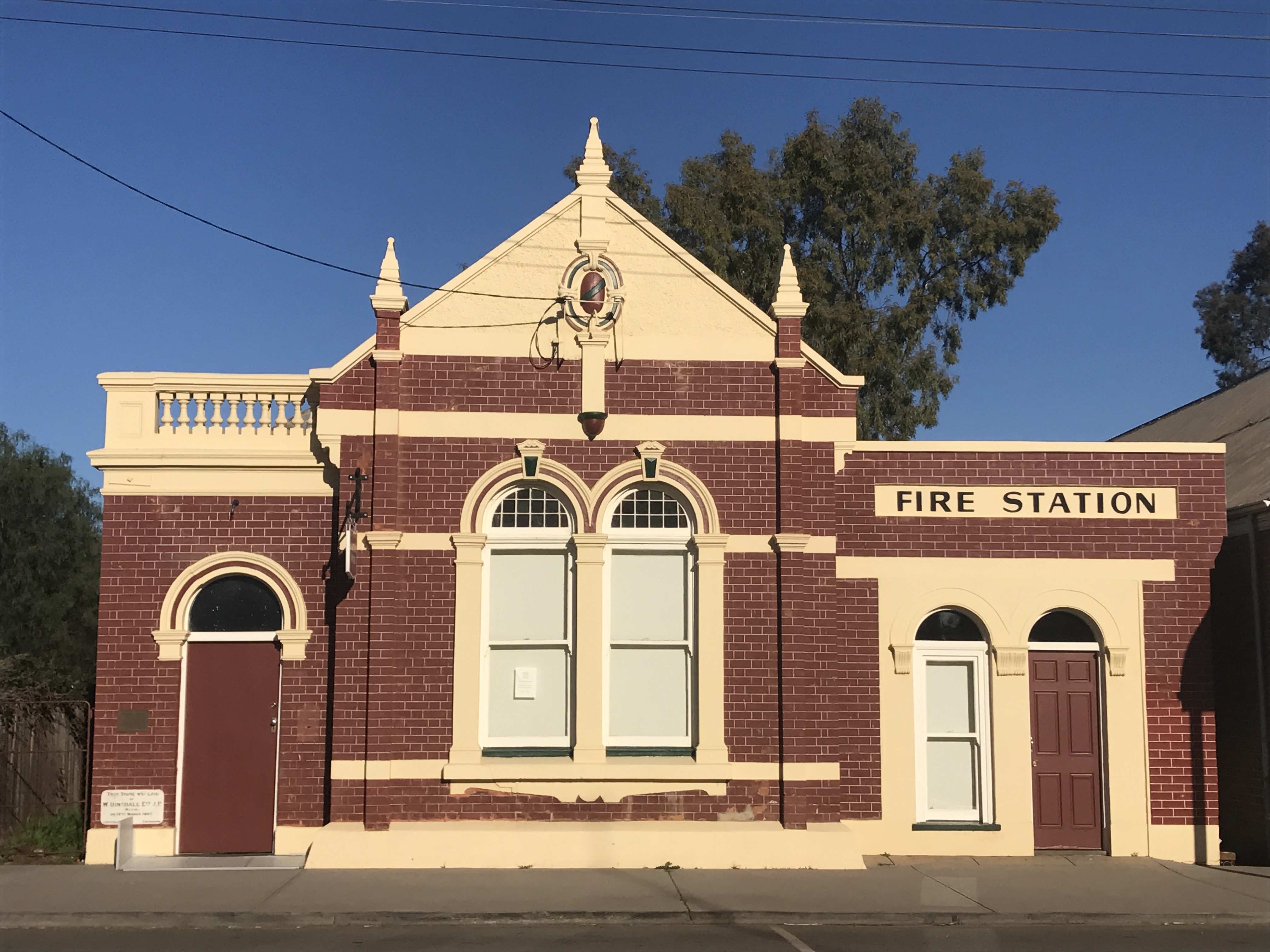 |
| The former York Fire Station, 1897 |
 |
| The main street of historic York, WA |
 |
| Langsford House, built in 1873 |
 |
| Settlers House and Courtyard Constructed from 1853 by Samuel Craig |
 |
| Heritage houses, Avon Terrace, York, WA |
 |
| The entrance to the York Courthouse. The area has a gaol, two courthouses, police offices, stables, troopers' cottage and police quarters.Built between 1852 and 1910 |
 |
| Heritage cottage, McCartney Street, York WA |
 |
| York Palace Hotel, circa 1909 |
 |
| Marwick's Barn, built from 1876 |
 |
| York & Districts Co-Op & Quarters was constructed in 1872 for William Edwards Jnr, and was owned and operated by members of the Edwards family until 1936 |
 |
| Masonic Hall, Joaquina Street, York, WA, circa 1888 |
Things To Do and Places To Go Self Drive Tours And Walk Trails
Ghost Town Tour
York Residency Museum
York Motor Museum
The York Society







































































